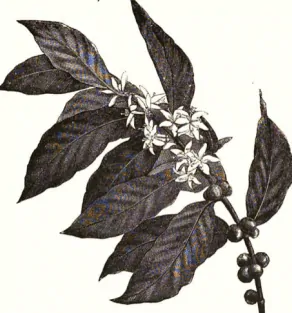Coffee has been around for centuries, and so have Coffee Nuts who were quite bold in how they made a memorable cup in “the day”, and even with a recipe for Coffee Tapioca, as our historic research will reveal…
Have an Egg in your Coffee
The Thurber Recipe (circa 1881): Grind moderately fine in a small bowl around 1 cup of coffee, and break into it one egg with shell. Mix well, adding enough cold water to wet the grounds. Then pour in one pint of boiling water and let it bowl slowly for ten to fifteen minutes, according to the variety of coffee used and the fineness to which it is ground. Let is stand three minutes to settle, then pour through a fine wire sieve into a warm coffee pot. This will make enough for four persons. Finish this off by putting sugar into your cups, then fill half of each cup with boiling milk, add the coffee, and then, as Francis Thurber continues writing in Coffee from plantation to cup, you will have “a delicious beverage that will be a revelation to many poor mortals…” An egg? Interesting. And, yes, we do claim Ms. Thurber as an historic Coffee Nut. But we have to caution you that you should filter your coffee, as the next bit of research directs.
Government Experiments with Coffee
We love it that the “United States Office of Experiment Stations”, put out a bulletin containing recommendations for the preparation of coffee, in 1898. In a section of the bulletin called “Pupils’ Exercises on Lesson on Tea and Coffee,” our government of that era puts out that, ” All coffee should be ground just before using.” So far, so good. Then, the recipe begins by specifying 1 tablespoonful of coffee to each cup of water. “The ground coffee should be put into a muslin bag or strainer and the boiling water poured over.” Finally, we are instructed that, “the water must be freshly drawn and the minute it has boiled, the tea or coffee should be infused.” And regarding “infusion” (pouring boiling water over coffee in a muslin bag — in modern times paper coffee filters do the same work in a drip coffee maker — the author says, “The only right way to prepare tea and coffee is by infusion, but they are often made by decoction, and when made in this way, they are injurious to our bodies.” Hmmm… someone from the Government should have informed Ms. Thurber to filter her coffee.
Ok. We had to look up “decoction”, and here’s what we found at Dictionary.com: “water in which a crude vegetable drug has been boiled and which therefore contains the constituents or principles of the substance soluble in boiling water.” Lesson? Don’t boil your coffee directly in water — always use some method of filtering. Coffee Nuts in the Government? We never doubted it, but as always we wish they could be more efficient in their work.
Start Tapping with Coffee Tapioca
Reviewing the book, Choice Recipes, by the First Congressional Society Ladies from Keene N.H., also in 1898, we find this interesting concoction: Combine four cups of coffee strained through a cloth, one cup of sugar, and four tablespoonfuls of tapioca which has been soaked over night. Boil the mixture and stir in two tablespoonfuls of corn starch which has been dissolved in a little cold water. Take from stove and turn in a mold or glass dish. Serve with sugar and cream, and flavor with vanilla. Along with this recipe was published the admonishment, “ask your Grocer for ‘Elastic’ Starch. Take no other.” We like the whole recipe and are thinking now that there are many creative ways to enjoy coffee. Hey… 1898 seems to be a seminal year for Coffee Nuts.
Admonishment: Avoid Adulterants…
A Mr. Joseph Walsh, writing in the book, Coffee: its history, classification and description, warns that ground coffees may be “subject to the most extensive adulterations, all being more or less sophisticated or adulterated in one form or another, chief among which is that of the admixture of the roasted and ground roots of Chicory, Dandelion, Carrot, Parsnip, Beet and other leguminous vegetables.” Parsnip? Mr. Walsh goes on to list other spurious ingredients for which to be on lookout including, “Peas, Beans, Rye, Rice, Wheat, Barley and various other cereal grains, including the seeds of broom, fenugreek, iris and acorn.” Wild. Fenugeek? We have heard of mixing healthy chinese mushrooms with coffee, but these mixtures are curious indeed. It’s best not to become an adulterer with your coffee.


